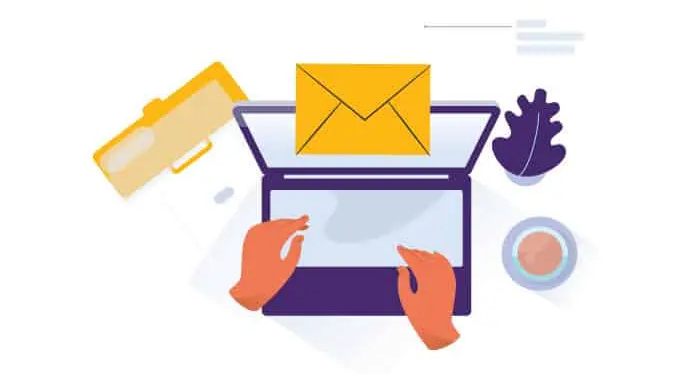In today’s interconnected world, maintaining vibrant connections, both personal and professional, is paramount. One effective way to uphold these connections is through well-crafted keep-in-touch emails. These emails serve as bridges, ensuring that your network remains active and engaged, ultimately contributing to your success. Let’s look into the essence of keep-in-touch emails, explore when to employ them, and furnish you with a comprehensive guide, complete with templates and examples, to streamline your communication process.
What is a keep-in-touch e-mail?
A keep-in-touch email is more than just a message; it’s a lifeline of communication you extend to personal or professional contacts to reignite dormant connections. Over time, networks can fade into obscurity due to evolving circumstances or the passage of time. By sending periodic emails, you not only stay abreast of each other’s lives but also ensure that your network remains relevant and engaged. These emails serve as gentle reminders, prompting others to recall your presence and fostering curiosity about your personal and professional endeavors.
When to Send a Keep-in-Touch Email
Knowing when to deploy keep-in-touch emails is crucial. They are particularly apt when you perceive a valued acquaintance or colleague might be overlooking your connection. Whether it’s a significant holiday or a milestone event, such occasions present perfect opportunities to extend a friendly gesture and rekindle communication. Here are some common scenarios where keep-in-touch emails can work wonders:
Writing Your Keep-in-Touch Email
Personalization is Key
If a colleague has moved on from your shared workplace, maintaining ties can prove beneficial on both personal and professional fronts. Crafting a concise email expressing your desire to stay connected, coupled with reminiscences of shared projects or events, can effectively reignite the bond. You may also hint at future collaborations, enhancing the email’s effectiveness.
Concise and Direct Communication
Keep your email brief and to the point. Busy professionals appreciate messages that respect their time. Clearly state your purpose and suggest ways to stay connected.
When composing a keep-in-touch email, adhere to these essential steps:
1. Choose a Relevant Topic Select a specific topic that resonates with the recipient. Whether it’s congratulating them on an achievement or referencing a shared experience, a focused subject line enhances the email’s impact.
2. Begin with a Warm Salutation Set the tone with a friendly yet professional greeting. Tailor the formality based on your relationship with the recipient, opting for either a formal title or a more casual approach.
3. Remind Them of Your Connection In the opening paragraph, jog their memory by briefly recounting how you know each other. This serves to reestablish familiarity and context.
4. Extend the Invitation In the subsequent paragraphs, express your desire to maintain regular contact. If applicable, cite common professional goals or shared interests to underscore the mutual benefits of staying connected.
5. Conclude with a Cordial Farewell Mirror the tone of your opening salutation in your closing remarks. Express hope for future communication and provide contact details for easy reach-out.
Dos and Don’ts
Dos:
- Do express genuine interest in maintaining the relationship.
- Do offer value or assistance to your contact.
- Do keep the tone friendly and professional.
Don’ts:
- Don’t use generic templates without personalization.
- Don’t overwhelm your contact with too much information.
- Don’t neglect to follow up after initial contact.
Sample Keep-in-Touch Email Templates
Template 1: Reconnecting with a Former Colleague
Subject: Catching Up and Looking Ahead Hi [Name],
I hope this email finds you well! It’s been some time since we last connected at [Event/Company]. I fondly remember our collaboration on [Project], and I’m eager to catch up and explore potential opportunities to work together again. Let’s schedule a call or grab coffee soon!
Best regards, [Your Name]
Overcoming Common Challenges
From writer’s block to fear of rejection, crafting keep-in-touch emails comes with its challenges. Overcome these hurdles by staying authentic, focusing on mutual benefits, and embracing rejection as a natural part of networking.
Ensuring Accessibility and Inclusivity
Keep your emails accessible to all recipients, regardless of their abilities or preferences. Use clear formatting, alt text for images, and plain language to ensure everyone can engage with your message.
Conclusion
Writing keep-in-touch emails is a valuable skill in today’s interconnected world. By following these tips and staying authentic, you can nurture lasting relationships and unlock countless opportunities.
FAQs
Q1. How often should I send keep-in-touch emails?
Sending emails every few months is a good practice to stay on your contact’s radar without overwhelming them.
Q2. What if I don’t receive a response to my email?
Don’t take it personally. Follow up politely after a reasonable time, but respect their decision if they’re not interested in reconnecting.
Q3. Can I use emojis in keep-in-touch emails?
While emojis can add a touch of personality, use them sparingly and consider your recipient’s preferences and professional context.
Q4. Should I include attachments or links in my emails?
Unless necessary, avoid attachments or links in initial emails to prevent your message from being flagged as spam. You can share relevant resources in follow-up communication.
Q5. Is it appropriate to send keep-in-touch emails to old acquaintances?
Absolutely! Reaching out to old acquaintances can lead to unexpected opportunities and rekindle valuable connections.









Discussion about this post